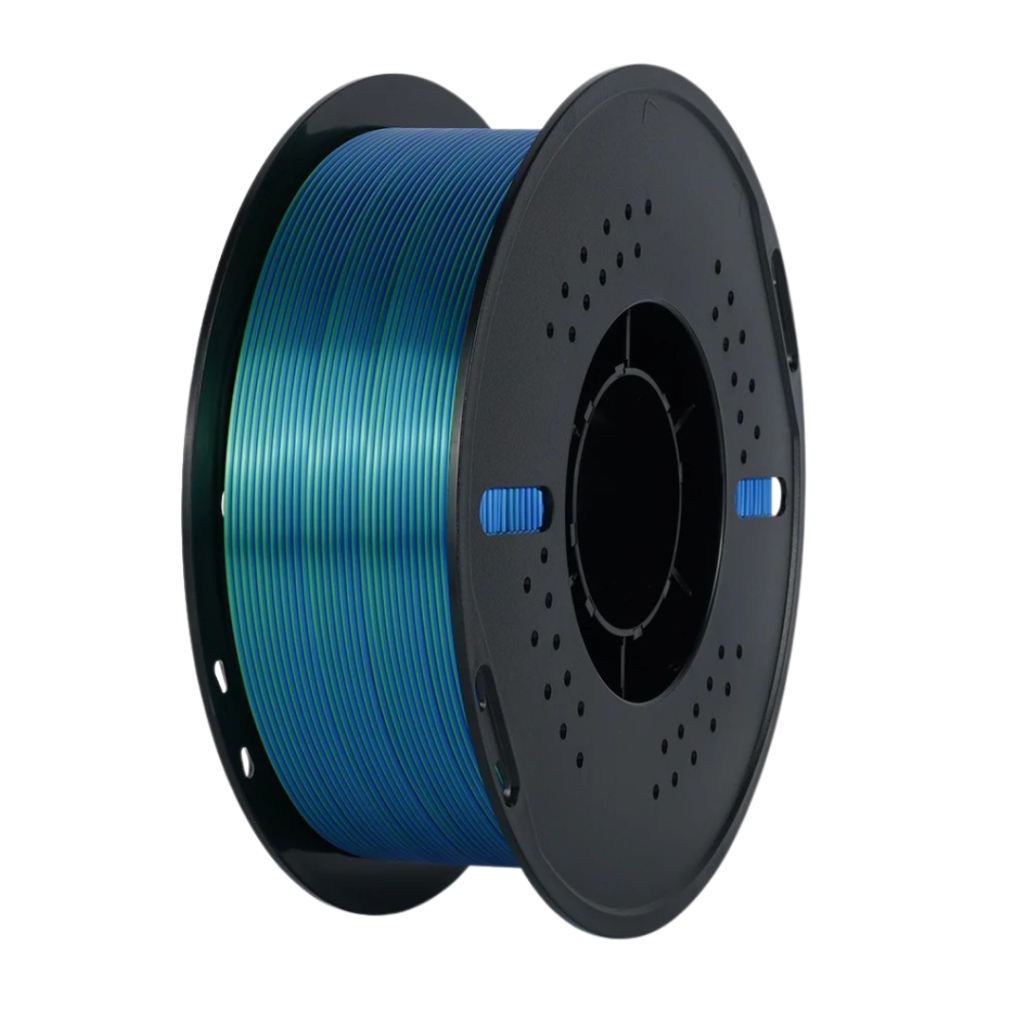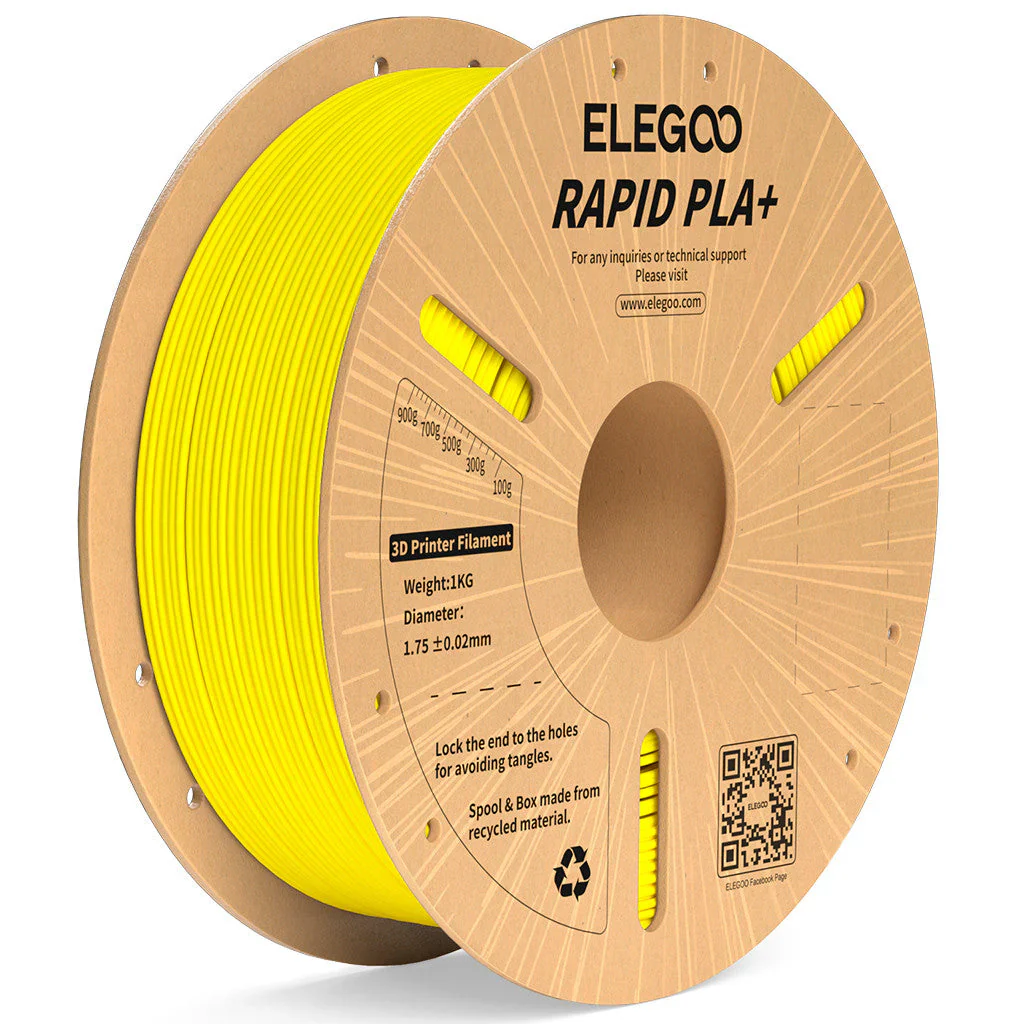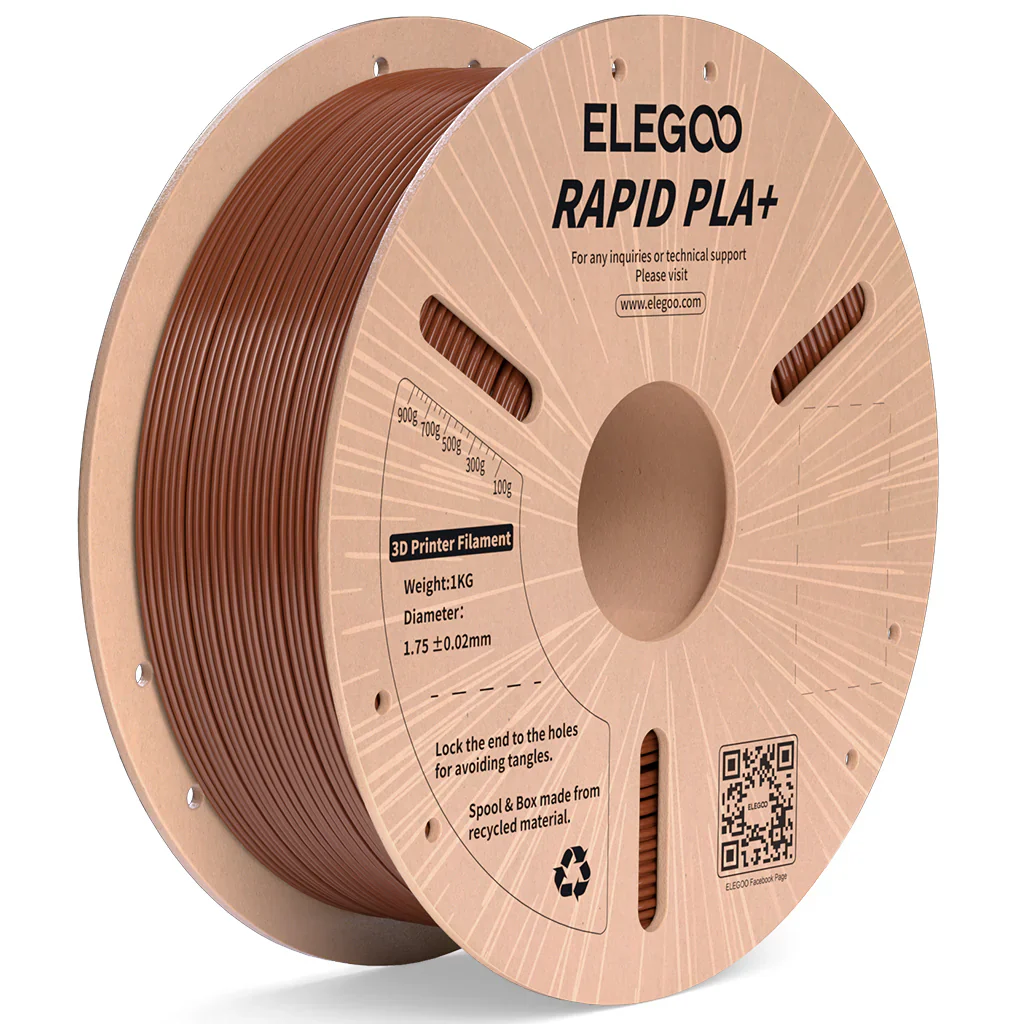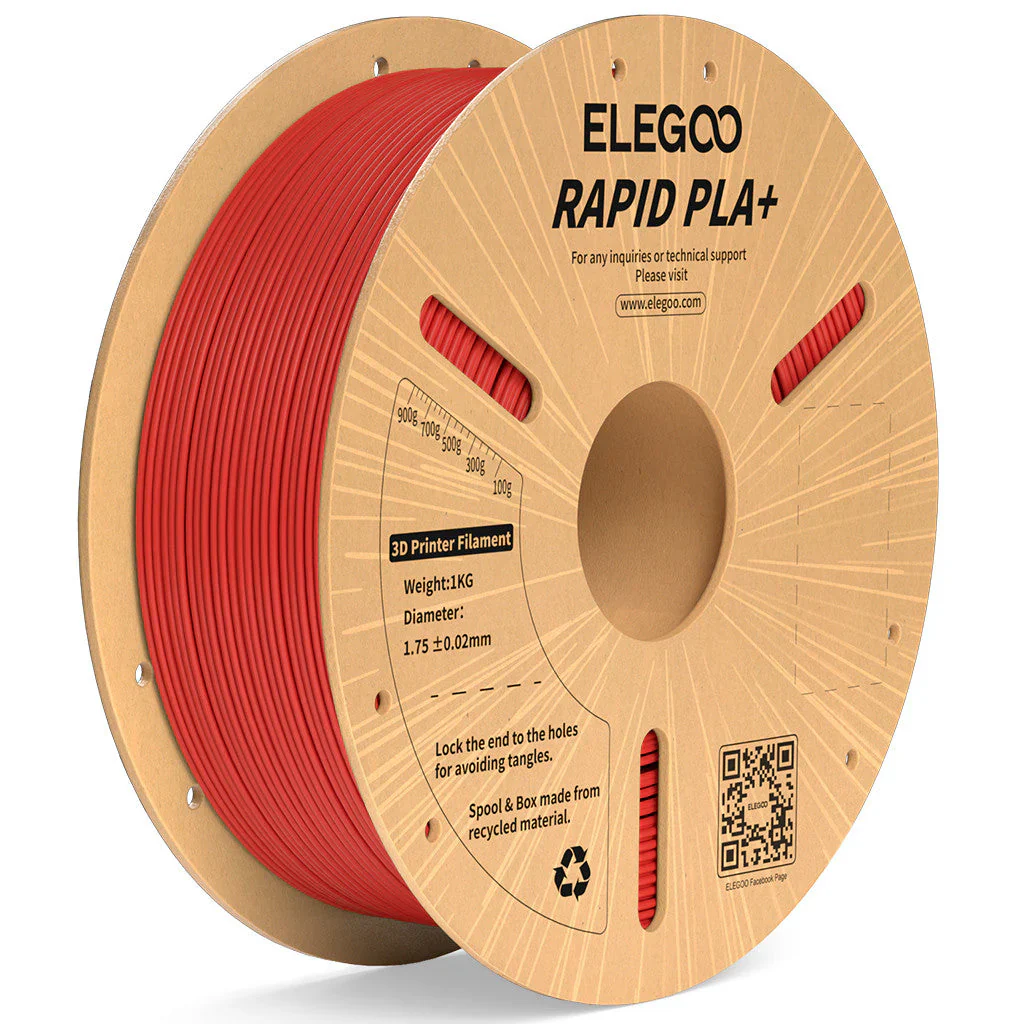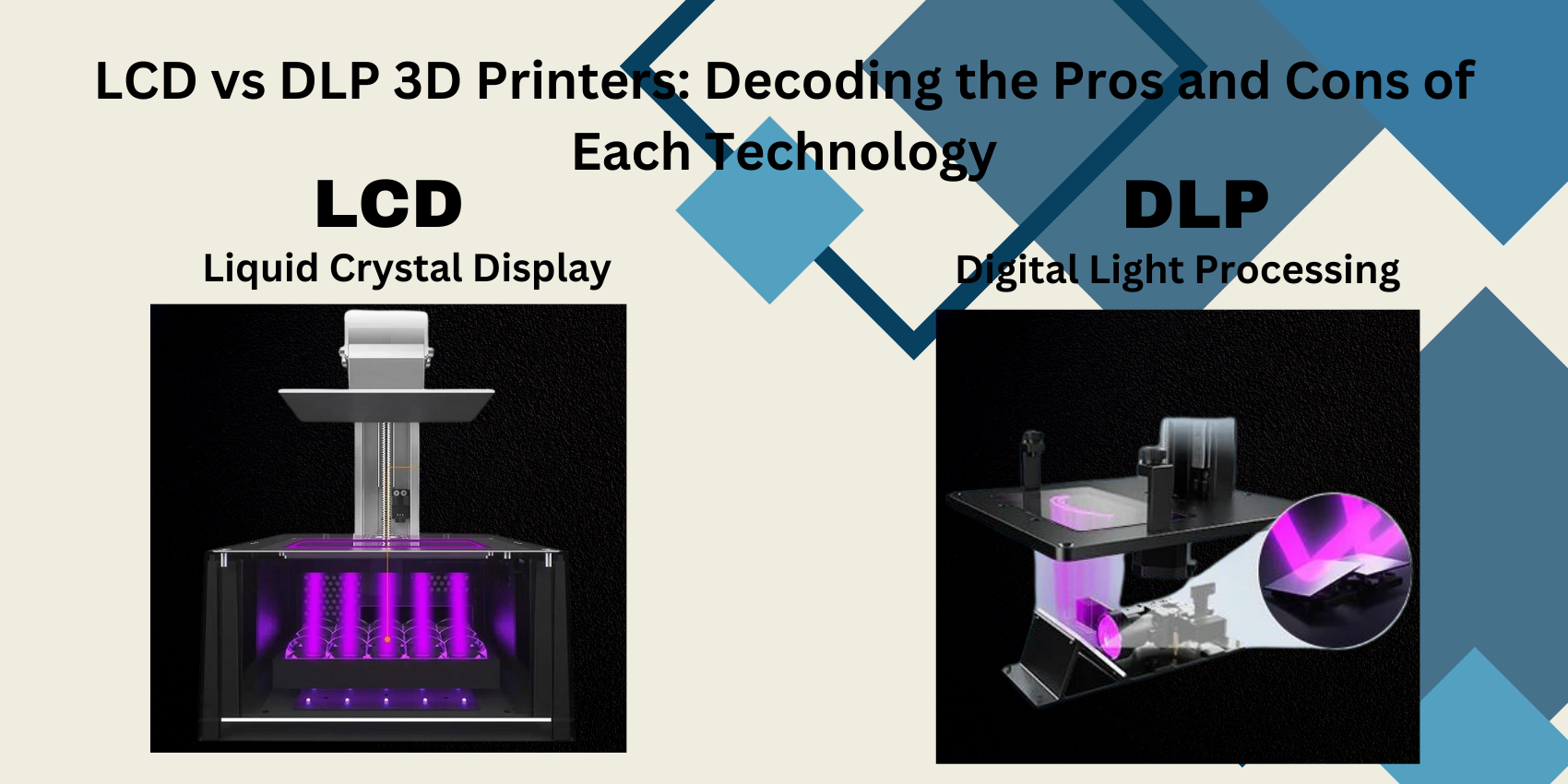
In the world of 3D printing, there are various technologies available that cater to different needs and applications. Two prominent technologies are LCD (Liquid Crystal Display) and DLP (Digital Light Processing) 3D printers. These technologies have their own unique characteristics and advantages, making them suitable for specific use cases. In this article, we will delve into the intricacies of LCD and DLP 3D printing technologies, exploring their pros and cons, and helping you make an informed decision when choosing between them.
 Understanding the Basics of 3D Printing
Understanding the Basics of 3D Printing
Before we dive into the specifics of LCD and DLP 3D printing technologies, let’s first understand the basics of 3D printing. At its core, 3D printing is an additive manufacturing process that creates three-dimensional objects by depositing layer upon layer of material until the desired object is formed. This process is achieved through the use of a computeraided design (CAD) model, which is sliced into thin layers, and then translated into machine-readable instructions for the 3D printer.
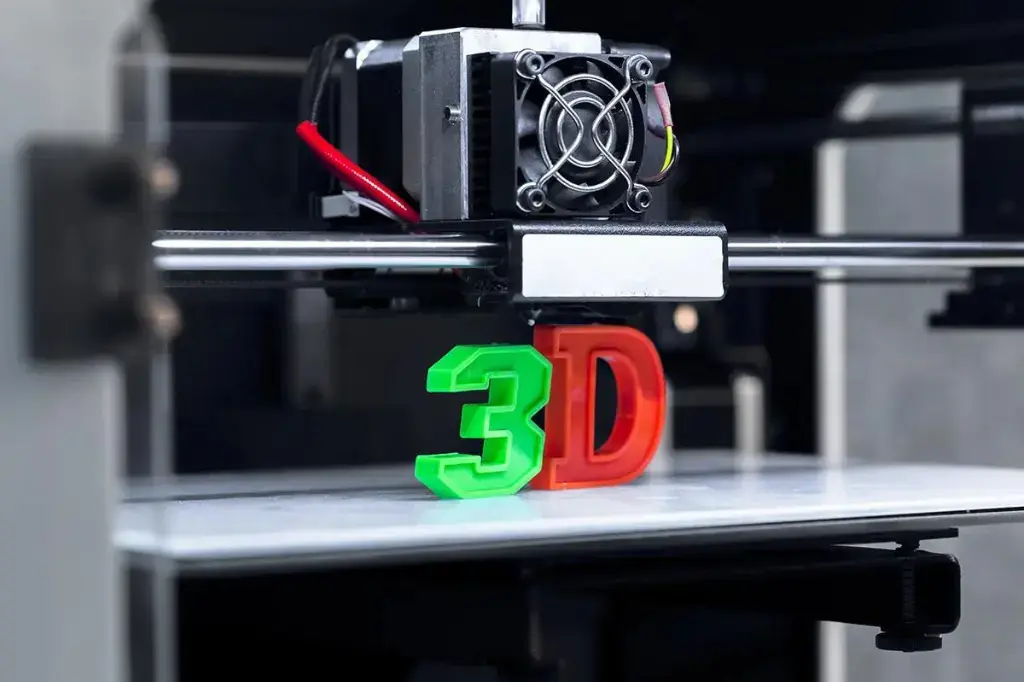
Pros and Cons of LCD 3D Printers
LCD 3D printers utilize a liquid crystal display to selectively cure photopolymer resin layer by layer, resulting in the creation of three-dimensional objects. One of the major advantages of LCD 3D printers is their speed. LCD technology allows for faster printing times compared to other 3D printing technologies, making it an ideal choice for those who require rapid prototyping or production of small-scale objects.
Another advantage of LCD 3D printers is their affordability. LCD-based printers tend to be more cost-effective than their DLP counterparts, making them a popular choice among hobbyists and small businesses. Additionally, LCD 3D printers offer a high level of detail and precision, ensuring the accurate reproduction of intricate designs.
However, there are a few downsides to consider when it comes to LCD 3D printers. One limitation is the relatively shorter lifespan of the LCD panel. Over time, the exposure to UV light during the printing process can degrade the LCD panel, affecting the overall
performance and requiring replacement. Furthermore, LCD 3D printers may experience a phenomenon known as “screen door effect,” where the fine grid lines of the LCD panel become visible in the printed object, resulting in a slightly less smooth surface finish.
Pros and Cons of DLP 3D Printers
DLP 3D printers, on the other hand, employ a digital light processing technique to cure the resin and create three-dimensional objects. DLP technology utilizes a digital micromirror device (DMD) to selectively project UV light onto the resin, solidifying it layer by layer. One
of the notable advantages of DLP 3D printers is their ability to produce objects with incredibly high resolution and accuracy. The use of a DMD allows for precise control of the light exposure, resulting in exceptional detail and smooth surface finish.
Another benefit of DLP 3D printers is their durability. Unlike LCD panels, the DMD chip used in DLP printers is highly resistant to UV degradation, ensuring a longer lifespan and consistent performance. Additionally, DLP technology offers a wide range of materials
compatibility, enabling the use of various resins with different properties and capabilities.
However, there are a few drawbacks to consider when opting for a DLP 3D printer. One of the main limitations is the slower printing speed compared to LCD printers. The projectionbased approach of DLP technology requires each layer to be projected individually, which can result in longer print times, especially for larger objects. Additionally, the cost of DLP printers is generally higher than LCD printers, making them less accessible for those on a tight budget.
Comparison of LCD and DLP 3D Printing Technologies
Now that we have explored the pros and cons of LCD and DLP 3D printers individually, let’s compare these two technologies side by side. When it comes to speed, LCD printers have the upper hand, offering faster printing times, while DLP printers excel in terms of resolution and surface finish. The choice between the two technologies largely depends on the specific
requirements of your project.
In terms of cost, LCD printers are generally more affordable, making them a suitable choice for beginners, hobbyists, and small businesses. DLP printers, on the other hand, may be more expensive, but they offer superior print quality and durability. If you have a larger budget and require high-resolution prints, a DLP printer might be the better option.
Factors to Consider When Choosing Between LCD and DLP 3D Printers
When deciding between LCD and DLP 3D printers, there are several factors to consider. First and foremost, analyze your project requirements. If speed is a priority and you are working on smaller objects, an LCD printer might be the right choice. If high resolution and fine details are crucial, a DLP printer would be more suitable.
Consider the materials you plan to work with as well. LCD printers offer a wider range of compatible resins, including flexible and castable resins. DLP printers, on the other hand, are more versatile when it comes to specialized materials, such as dental or engineeringgrade resins.
Budget is another significant factor. LCD printers are generally more cost-effective, making them a preferred option for those with limited resources. However, if print quality and durability are of utmost importance, investing in a higher-end DLP printer might be a wise decision.
Real-World Applications of LCD and DLP 3D Printing Technologies
Both LCD and DLP 3D printing technologies find applications across various industries. LCD printers are commonly used in industries such as jewelry, dental, and rapid prototyping. Their speed and affordability make them suitable for producing intricate models, dental
aligners, and functional prototypes.
DLP printers, with their exceptional resolution and accuracy, are often utilized in industries like aerospace, automotive, and medical. They are capable of producing high-resolution parts, detailed surgical models, and engineering prototypes that require precise
dimensions.
Popular LCD and DLP 3D Printer Models
There are several popular LCD and DLP 3D printer models available in the market. Some notable LCD printers include the Anycubic Photon, ELEGOO MARS 4 9K, and Phrozen Sonic Mini. These printers offer a balance between affordability and performance, making them
popular choices among beginners and enthusiasts.
On the other hand, DLP printers such as the ELEGOO Mars 4 DLP, Formlabs Form 3, Peopoly Moai, and B9Creator excel in terms of print quality and precision. These printers are often favored by professionals and businesses that require high-resolution prints.
Tips for Getting the Best Results from LCD and DLP 3D Printers
To ensure optimal results from your LCD or DLP 3D printer, here are a few tips to keep in mind:
-
- Calibrate your printer regularly to maintain accuracy and precision.
-
- Use high-quality resins that are compatible with your printer for optimal performance.
-
- Pay attention to proper resin handling and storage to prevent contamination.
-
- Experiment with different print settings, such as layer height and exposure time, to
achieve the desired outcome.
- Experiment with different print settings, such as layer height and exposure time, to
-
- Clean and post-process your prints carefully to enhance their visual appeal and
functionality.
- Clean and post-process your prints carefully to enhance their visual appeal and
Conclusion: Which Technology is Right for You?
In conclusion, both LCD and DLP 3D printing technologies offer unique advantages and cater to different needs. LCD printers are known for their speed and affordability, while DLP printers excel in terms of resolution and surface finish. When choosing between the two, consider factors such as project requirements, materials compatibility, budget, and desired print quality.
Ultimately, the technology that is right for you depends on your specific needs and priorities. Whether you are a hobbyist, a small business owner, or a professional in a specialized industry, carefully evaluate the pros and cons of LCD and DLP 3D printers to
make an informed decision that aligns with your goals. Now that you have a better understanding of LCD and DLP 3D printing technologies, it’s time to embark on your 3D printing journey. Happy printing!
Ready to explore the world of 3D printing? Check out our range of LCD and DLP 3D printers and start bringing your ideas to life!
Best LCD/DLP 3D Printers
ELEGOO Rapid PLA Plus 3D Printer Filament (Yellow) – 1.75mm, 600mm/s High-Speed Printing, 1kg Spool
₹1,249.00 Incl. of all taxesDelivers high-speed printing up to 600mm/s, strong layer adhesion, ±0.02mm accuracy, smooth extrusion, and reliable results for professional 3D printing.
ELEGOO Rapid PLA Plus 3D Printer Filament (Orange) – 1.75mm, 600mm/s High-Speed Printing, 1kg Spool
₹1,249.00 Incl. of all taxesDelivers high-speed printing up to 600mm/s, strong layer adhesion, ±0.02mm accuracy, smooth extrusion, and reliable results for professional 3D printing.
ELEGOO Rapid PLA Plus 3D Printer Filament (Brown) – 1.75mm, 600mm/s High-Speed Printing, 1kg Spool
₹1,249.00 Incl. of all taxesDelivers high-speed printing up to 600mm/s, strong layer adhesion, ±0.02mm accuracy, smooth extrusion, and reliable results for professional 3D printing.
ELEGOO Rapid PLA Plus 3D Printer Filament (Red) – 1.75mm, 600mm/s High-Speed Printing, 1kg Spool
₹1,249.00 Incl. of all taxesDelivers high-speed printing up to 600mm/s, strong layer adhesion, ±0.02mm accuracy, smooth extrusion, and reliable results for professional 3D printing.

